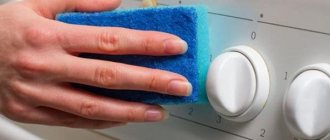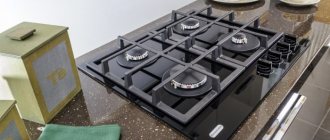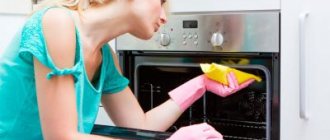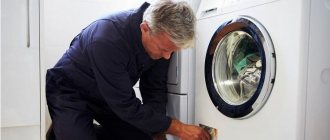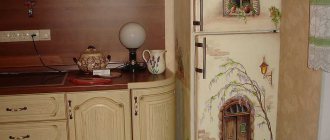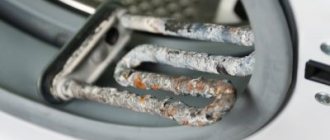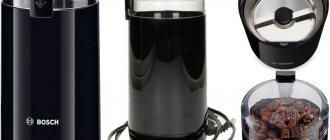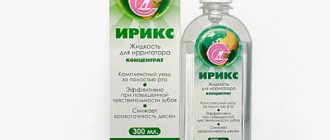Induction cookers look elegant in modern kitchen interiors. They do not take up much space, serve for a long time and without interruption, and do not require complex maintenance. But this does not mean that you can use any cleaning products or metal sponges on these surfaces. To keep glass-ceramic tiles safe and sound, it is important to follow the recommendations.
Rules of service
Induction panels quickly gained popularity among users not so much due to the properties of heat transfer without heating a larger surface area, but due to their stylish and laconic design.
Such hobs provide a smooth (and even mirror-like) surface. The material from which the boards are made can withstand impacts and high temperatures, but it is very easy to scratch (even accidentally). If a knife or fork falls on the stove, it will leave a mark on the surface. This must be taken into account when maintaining the unit.
WE RECOMMEND! Read on our website detailed instructions on how to clean the inside of the refrigerator after defrosting.
In order for glass-ceramic tiles to last for many years, you need to follow some recommendations:
- Wash the stove after it has cooled completely. Otherwise, in 100% of 100 cases, soap stains, remains of burnt food, drops and other dirt will remain on the stove. You can also easily get burned on such a surface.
- It's best to wipe down your stove before you start cooking. This may sound strange to some, since the surface is already clean. But there are already small stains on the tile, they will begin to burn and stick during work, and from small such stains will quickly turn into noticeable and difficult to remove.
- Carefully ensure the cleanliness and smoothness of the bottom of the dishes that you place on the tile. Rough, oily, uneven bottom may damage the surface.
- Make sure that there are no water droplets or streaks left on the stove after cleaning. Be sure to wipe the surface after washing with a paper towel or dry soft cloth.
- You should not use the same sponges or rags to clean your induction cooker that you, for example, use to wash dishes, wipe furniture or windows. Cleaning with such rags will leave stains and streaks.
Daily care
To ensure that your induction hob lasts longer and its appearance remains presentable, clean the surface daily.
IMPORTANT! Daily care includes normal damp cleaning with a suitable mild detergent and a clean sponge without any abrasives. After cleaning, wipe the surface dry with a cloth or paper towel.
Do you have an induction cooker?
Not really
Step by step cleaning:
- Wait for the hob to cool completely.
- Dampen a soft and clean (!) sponge in a soapy solution and wipe the surface of the tile.
- Leave the product on for a few minutes so that it has time to eat away any burnt-on food debris.
- Wipe the surface with a clean, damp cloth to remove any remaining soap, grease or scale.
- Dry with a paper or cloth towel.
Major cleaning
If you just can’t get rid of old stains on your induction hob, then regular wet cleaning will no longer work for you. Here you need to approach the problem radically. For major cleaning you will need rubber scrapers and specialized cleaning products for glass-ceramic surfaces (stoves) :
- Apply your regular detergent to the entire tile surface. Place a cloth soaked in detergent on especially problem areas. Leave everything for a few minutes.
- Wipe with a damp, clean cloth, and remove any remaining burnt food with a rubber scraper. At the same time, hold the spatula at an angle of 30-45 degrees so as not to scratch the panel.
- If the detergent cannot cope with the stains, then it’s time to move on to using specialized preparations that are designed for cleaning induction hobs. Typically, the instructions call for applying a small amount of the product to stains and carbon deposits for a few minutes, after which you need to remove the remaining solution and loose grease with a damp sponge or cloth.
ATTENTION! You can use specialized cleaning products for hobs only with gloves, as they contain aggressive chemical compounds that can corrode the skin.
We wash away stubborn stains
The main types of contamination on an induction hob:
- scale;
- fat;
- water stains;
- finger marks;
- burnt food (rare).
Usually the stove does not become so dirty that it becomes difficult to clean. Stains can be easily removed with regular dishwashing detergent and a sponge. To avoid streaks, wipe off the moisture with paper towels.
Special means
Special products are available to care for induction panels. Their use provides certain advantages: the composition includes substances that, when applied to glass ceramics, create an invisible film. It protects the stove from dirt and prevents food from sticking.
- Special scraper for glass ceramics (from 250 RUR). Helps quickly and safely remove grease, dried food residues, scale, and plaque. The scraper is used while holding it at an angle of 45 degrees.
- Cleaning product ELECTROLUX, 250 ml (from 180 rub.). It does not leave scratches, while effectively removing burnt food, polishing glass ceramics and covering it with a protective film.
- Cleaner for glass-ceramic surfaces Glutoclean, 750 ml (about 500 rub.). German quality product. It has a spray bottle, making it easy and quick to apply. Gently cleans the surface, removes grease, scale, and carbon deposits.
- Cream for cleaning glass ceramics and microwave ovens Astonish, 235 ml (170 RUR). An economical, thick, concentrated product cleans all types of dirt on induction cookers. Smells pleasant and creates a protective layer on the surface.
- Beckmann for cleaning glass ceramics, 250 ml (300 rub.). Removes stains well thanks to micro polishing balls. Also contains silicone oils, which create a heat-resistant film and make cleaning the hob easier. And jojoba oil gives the stove a beautiful shine.
- Sano Ceramic Stove Tops Cleaner, 300 ml (430 RUR). A creamy cleaner that polishes and perfectly cleans glass ceramics, chrome, nickel and stainless steel. Recognized with the Israel Institute of Standards Platinum Mark award.
- Detergent for stoves, ovens and microwave ovens Ecover Oven & Hob cleaner, 500 ml (650 RUR). Copes with all types of contaminants. It features the most natural composition. The bottle itself is made from recycled plastic, and the product does not contain harsh chemicals or phosphates that pollute groundwater. Does not irritate sensitive skin.
We recommend: Unpleasant smell from the sink - what to do?
Folk remedies
Despite the fact that the induction cooker is a modern invention, many housewives use “popular” products to clean it. They are more environmentally friendly, cheaper and also cope quite well with pollution.
What means can you use to clean the stove?
- Vegetable oil for soot. Apply it to the stain and wait 5-10 minutes. Soak a sponge in warm water and remove the softened carbon deposits along with the oil.
- Baking soda. Dilute baking soda with water to a paste consistency. Apply to the problem area (any type of dirt) for 5-10 minutes. Rub the surface with a damp cloth, and then rinse off the remaining soda.
- Ammonia for stains, fingerprints and greasy deposits. This folk remedy will help clean the stove until it shines. To 5 tbsp. add 1 tbsp to spoons of water. a spoonful of ammonia. Pour into a spray bottle. Treat the surface and wipe with a dry cloth.
- Vinegar for disinfection, removal of scale and foreign odors. Mix salt vinegar half and half with water and pour into a container with a spray bottle. Spray onto the stove. After a few minutes, wipe the surface with a paper towel or rag.
What rag to wash with
Only soft sponges or cloths without rough surfaces or texture can be used on induction hobs. You should not use metal sponges or scrapers, they will leave scratches on the surface and you will damage the hob. If you don’t have enough sponge to remove heavy carbon deposits, then use a rubber scraper (and then be careful).
Removing dirt and grease stains
A melamine sponge will help remove dirt and grease drops on the surface of the induction hob. Such a sponge, soaked in warm, clean water, removes dirt without unnecessary effort, after which all you have to do is wipe the stove dry.
If it does not cope with the task, then you can use a special scraper as an addition.
If you don’t have a special product for glass ceramics at hand, you can wash the stove from grease with a solution of baking soda, which not only perfectly cleans, but also disinfects the surface. To prepare the solution, add a little soda to clean water and apply the resulting mixture evenly to the contaminated area. After five minutes, the stove can be wiped with a soft cloth and rinsed with clean water.
What to do is strictly prohibited
Careless handling of the device may lead to damage. When operating and cleaning, you need to be as careful as possible and avoid the following actions:
- Do not clean the cooking surface with preparations containing abrasives. They will leave scratches that will significantly impair the performance of the tile in the future. The same applies to metal sponges, scrapers, knives and other sharp objects.
- Do not rub the surface if there are any hard particles left on it, for example, salt, sugar, etc. First, gently brush everything off or soak up any solid particles, only then proceed with the rest of the cleaning steps.
- Do not start cooking on the stove until you have removed any remaining food from it. Once the panel heats up, any residue will burn. It is very difficult to clean them when they are burnt.
- Do not expose the panel to sudden temperature changes. For example, you should not place objects from the refrigerator on it, splash ice water on it, scatter ice, etc.
Care instructions
- Wipe the stove after each use and immediately remove any dirt that appears.
- Do not use hard brushes, metal sponges, abrasive or aggressive cleaning agents. They leave scratches and cracks, which in the future will cause damage to the entire coating.
- Use separate sponges and napkins for cleaning glass ceramics. They will not be able to wash dishes. This will prevent grease and small food particles from getting onto the surface of the panel, which during subsequent operation of the stove will not only burn, but will lead to discoloration of the coating.
- Apply the cleaning agent to a damp sponge, not to the hob itself.
- Avoid using oven care products - their composition is not suitable for glass ceramics. By the way, it’s better not to use dishwashing detergent - it leaves stains and stains of a bluish tint. Sometimes you can use glass cleaning liquid.
- Finish cleaning the stove by wiping the surface dry. This will avoid unsightly stains, and will protect metal elements from rust.
How to clean various stains
IMPORTANT! In order for cleaning the hob to be as effective as possible, you need to take into account the type of contamination and its origin. Based on this data, we select a method for removing dirt.
From carbon deposits
Quite often, drops and pieces of food that are not wiped off the surface of the tile in a timely manner turn into soot. If you have started the problem, then you will no longer be able to do without a rubber scraper. You will have to soak the burnt residue for 10-40 minutes in detergent (or in a specialized cream for induction cookers), and then, after the carbon deposits have softened and come off a little, just carefully clean them with a scraper. At the end of the work, be sure to remove any remaining cleaning products and dirt with a damp sponge and wipe everything dry with a paper towel.
Read more about how to clean a ceramic hob from carbon deposits at home.
IMPORTANT! When using a rubber squeegee, always wet the surface before you begin scrubbing to avoid cracking or scratching the surface.
Fat
Regular dishwashing detergent is suitable for removing grease from the cooking surface. It dissolves fat perfectly.
However, it is better to entrust such contamination to specialized sprays, gels or cleaning creams for induction cooktops. They work much more efficiently and will not harm the hob.
How to clean the inside of the oven from grease, read this article.
Sugar
Sugar particles from the induction hob must be removed very carefully (this also applies to products that contain it):
- Cool the stove first.
- Use only silicone scrapers to avoid damaging the panel.
These two rules also apply to other low-melting materials such as polyethylene and plastic - they quickly melt on a hot surface, and then bake and stick tightly to it.
To remove sugar, you need to use major cleaning methods: specialized cleaning products, rubber scrapers, dishwashing detergents, etc.
Stains and plaque
Stains remain on the glossy and perfectly smooth surface of the tile. This is fine. But when these stains start and are not removed in time, they turn into a rather thick layer of plaque, which cannot be removed with ordinary wet daily cleaning.
IMPORTANT! Window cleaner is best for removing stains that appear after using tiles. These products contain chemical compounds that do not leave stains or streaks after drying.
Simply spray the surface of the tiles with the solution, then wait a while and wipe dry with a soft, clean cloth or paper towel.
Read here how to clean your kitchen hood from grease.
Cleaning agents for glass-ceramic surfaces
In order for dirt to be easily removed from the induction hob without any streaks remaining and its surface to always shine, it is necessary to use special products for these purposes. There are a huge variety of them sold, and almost every manufacturer of household chemicals produces cleaning products for induction hobs.
Important! The difference between such products and conventional ones is that they create an invisible thin film on the surface, which serves as additional protection for it. With regular use, the slab retains its original shine and there are no streaks left on it.
Of course, you can get by with ordinary soapy water, but it will never provide the same effect as special products. The price for them, as a rule, is much higher than for conventional detergents, however, they are used very economically and give an irreplaceable result.
Also read the article from which you will find out which brand is better for stainless steel pans.
Folk remedies
It seems that there are a lot of popular methods to solve any problem. This also applies to cleaning the induction hob.
Vegetable oil
For cleaning, you can use vegetable oils (sunflower or olive):
- Apply a small amount of oil to a cloth and apply to the stain for 30 minutes.
- Wash the tiles with your regular detergent.
- Remove any remaining cleaning agent with a damp sponge.
- Wipe the panel dry with a paper towel.
How to clean with baking soda
Not the best option for cleaning an induction hob ( soda can leave scratches on the surface ). Use it only if you are absolutely confident in your abilities:
- Apply baking soda to the stained area.
- Cover the stain with a towel soaked in soapy water.
- Leave the baking soda and soap on the stain for 15-30 minutes.
- Carefully remove any remaining detergent with a damp cloth. But under no circumstances rub the surface!
- Wipe dry with a clean towel.
Baking soda is widely used for cleaning household appliances. In this article you can learn simple recipes for cleaning the oven with soda and vinegar.
Removing scratches
The glass-ceramic surface of an induction hob is strong enough to support the weight of pans and pots. She is not afraid of strong heat. However, scratches may appear on it. Most often they are microscopic and visible only in light and glare. If they irritate you or there are so many of them that the appearance of the hob suffers, the surface can be polished.
GOI paste will help you cope with the task. It can be found at the car market. Costs about 50 rubles. for 300 g. This volume is quite enough to polish an induction cooker.
- Paste numbers 1,2,3 are softer and mask microscopic scratches.
- Number 4 – abrasive. It is used in tandem with a sanding machine (felt attachment).
To put the stove in order, you need to dilute the paste with a few drops of machine oil, apply it to the scratched area and rub vigorously with a thick cotton cloth. The process is quite labor-intensive, but certainly worth it. After polishing, the surface will become perfectly smooth and shiny.
We recommend: The most effective ways to clean a bowl or pan from burnt jam
In most cases, GOI paste completely solves the problem of scratches. It may not work only if the glass ceramics is covered with cracks and chips. In this case, there is only one option left - to completely change the top protective layer. On average, glass-ceramic coating costs 10,000 rubles.
Additional recommendations
Finally, I would like to give one more important piece of advice on caring for your induction hob: do not neglect daily wet cleaning. This will change the way you care for your hob for the better.
ADVICE! Immediately remove all burnt food particles from the stove, brush off sugar from the surface only after the stove has cooled, remove stains using specialized cleaning products and wipe dry with a clean soft cloth after use.
These recommendations will help you keep your induction hob in its original condition for many years.
How to wash an induction cooker
To keep your induction hob clean and not let its condition reach critical levels, you still need to devote time to cleaning from time to time. Usually, it is enough to take care of the surface daily so that the problem does not develop into more global troubles.
Daily Cleaning
Daily cleaning does not involve anything complicated. If you spend at least 10-15 minutes on the surface every day after preparing dishes, then global problems in the form of stains, grease and soot will not arise. For daily cleaning you will need:
- soft napkin or piece of cotton fabric;
- paper towels;
- care product.
Before you start cleaning your induction hob, you need to let it cool completely. Next, the step-by-step process looks like this:
- wipe the surface with a damp cloth to remove small debris, crumbs, and food residues;
- Apply detergent to the hob;
- rinse with clean water;
- wipe dry with a soft dry cloth;
- polish with paper towels.
If you do not ignore daily care, your equipment will always delight you with perfect cleanliness.
General cleaning
If for some reason the surface contains stains of dried grease, stains, carbon deposits, then special tools will come to the rescue. We are talking about a scraper for induction cookers, which is equipped with rubber replaceable nozzles.
First, dried stains need to be softened to make the process of removing them easier. Apply a special product to them, or moisten them with clean warm water. After 15-20 minutes, scrape them off and clean the stove in the manner described in daily care.
Important! The scraper should only be held at a 45 degree angle to the surface.
